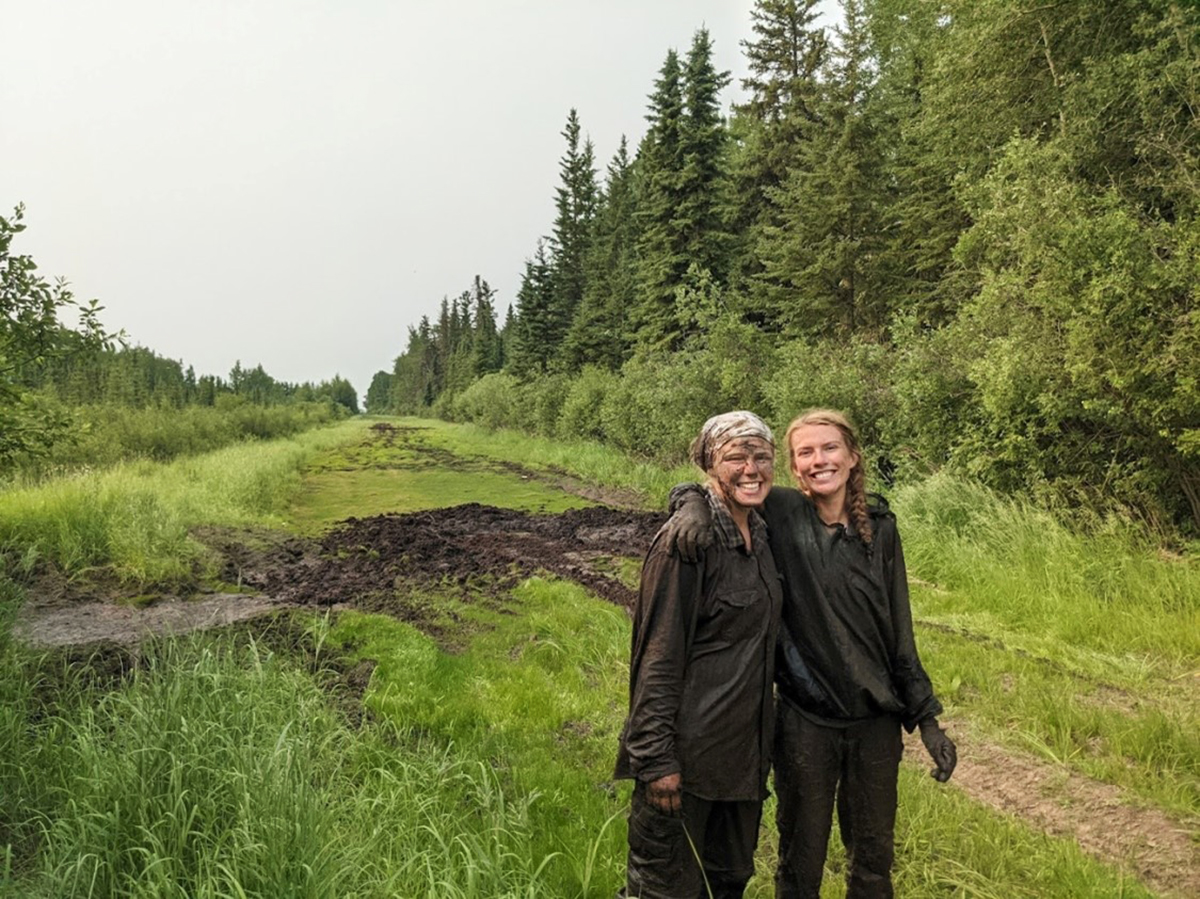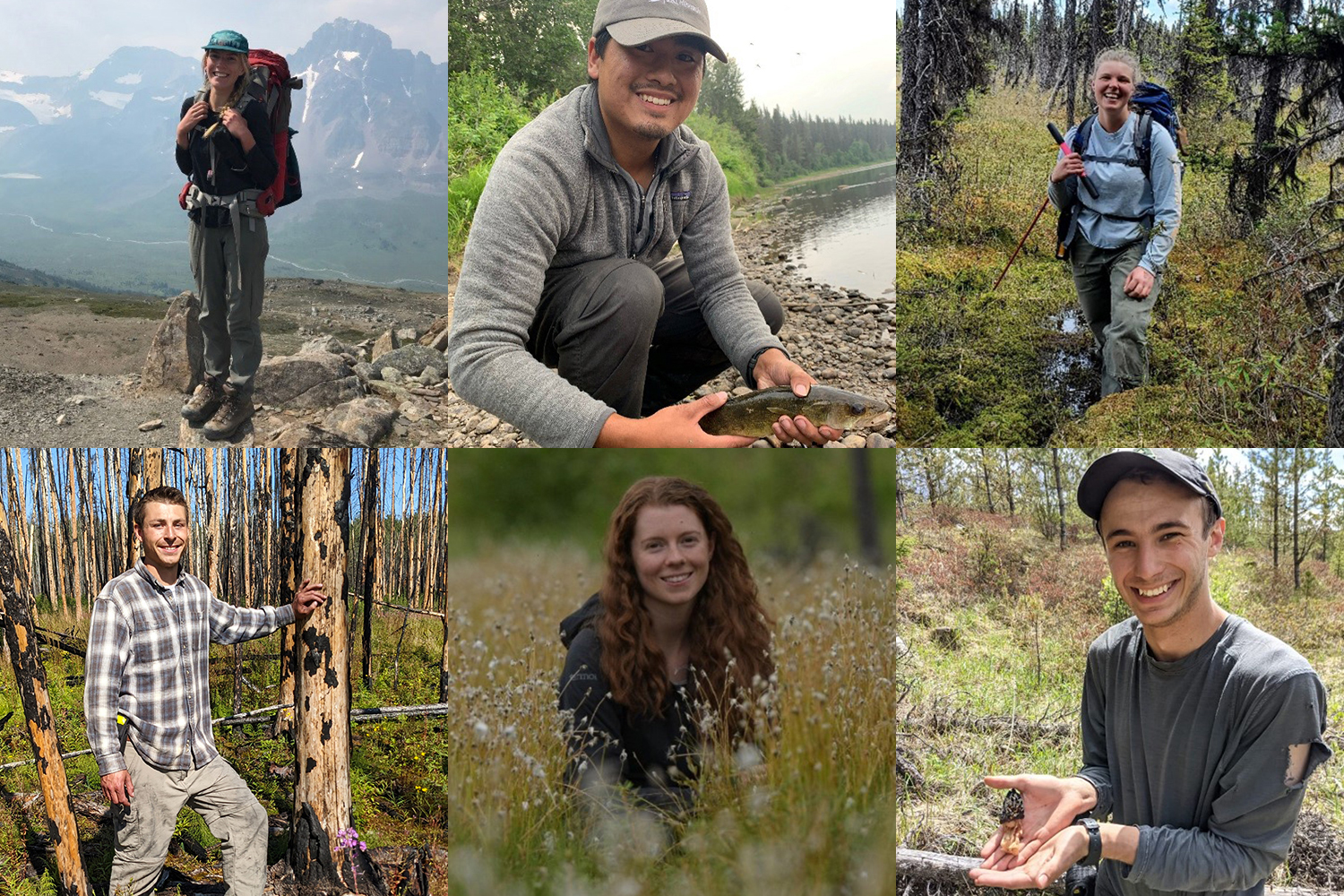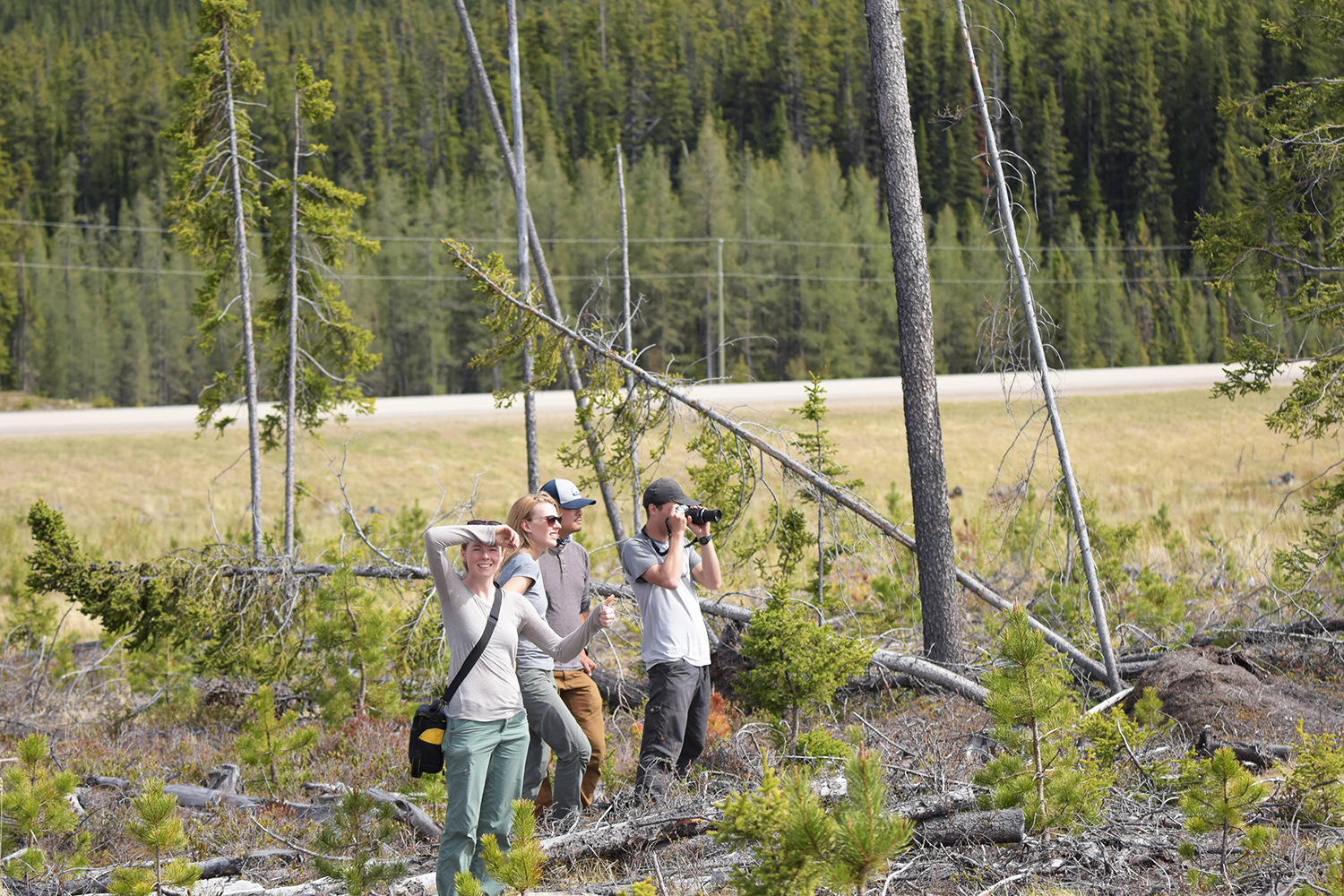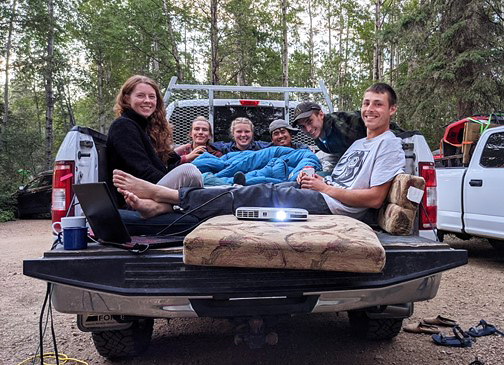
Solène Williams, Nikki Beaudoin, and Isaiah Huska
For the third field shift The Boos loaded up their hammocks, fishing rods, bug jackets, and sunscreen and headed to the Chinchaga region of Alberta. Located a convenient 6 hours due north, the crew took up squatters rights at Running Lake Provincial Recreation Area. The area was new to all, even the seasoned crew leaders; Isaiah and Solène had never been dispatched to the Chinchaga area before. And so, busting with excitement, they set off. What the drive lacked in scenic mountain views it made up for in simplicity: “drive due north until your co-pilot falls asleep 3 times, then turn west and drive until you either get stuck in a swamp or your vehicle is picked up by a swarm of mosquitos never to be heard from again, whichever comes first.”
Unlike the steep eastern foothills of the Rocky Mountains, this area of Alberta is home to dense boreal forest and sprawling wetlands. Fortunately for the crew, the name Running Lake comes from the pleasant warm water lake located at its center. This lake proved to be an oasis for the crew members as this shift coincided with the July heatwave. With daily temperatures soaring above 40 degrees Celsius with humidity, the crew began their days at 6am and worked until it was too hot to do anything but jump in the water.
The area was beautiful and teeming with wildlife: moose, black bear, deer, and birds. Unfortunately these sightings were not as frequent as the hordes of mosquitoes, black flies, and deer flies that feasted upon the crew members. Chinchaga could best be described as muggy and buggy. Many afternoons were spent under a mesh-enclosed awning arguing over playing cards and discussing the best practices to survive the fieldwork frontier.

Here are some of the strategies for bug relief that were shared by the crew:
- Nikki: In order to protect yourself from bugs, you must give up any hope of staying cool. Don your hiking boots, Carhartts, thick socks, rubberized gloves, mesh bug suit, and rain jacket/pants. Then douse your entire stylish ensemble with bug spray (at least 30% DEET, otherwise what’s even the point?)
- Solène: Invest in a Therma-cell, it’s a game changer. If times get desperate, bury yourself under a Sphagnum mat. As an added bonus this is also effective when it gets too hot.
- Jesse: Bugs think my coworkers are tastier than me.
- Janine: Take a bandana and soak it in DEET. Depending on the severity level of the bugs you can wear it in different styles. If the bugs aren’t too bad and you’re going for speed, you can put the bandana in ‘sport mode’ and tie it traditionally around your head to cover up your hair. If the bugs are bad, simply place the bandana on your head and wear your hat over it. The rest of your body acts as a sacrifice to distract the bugs away from your face and head and you can hopefully retain some sanity.
- Christian: Pray the bugs away and if that doesn’t work, resort to full rain gear.
- Isaiah: Cover yourself in DEET, drink at least ½ a cup for maximum protection.

As the area had not been recently explored by past field crews, road maps of the area were unreliable or simply nonexistent, so much time was spent on reconnaissance missions. While driving through new country might sound like a pleasant afternoon, it is actually fraught with peril. We soon discovered that many of the “roads” visible on the satellite imagery had been decommissioned, overgrown, or flooded by beavers.
On one fateful morning, Janine and Nikki ventured down to what was supposed to be a main access road for a large cluster of sites but it had become heavily overgrown. What had appeared to be grass in some spots was hip-deep mud in others and before the two even knew it the front end of their truck was thoroughly stuck. The two dug for hours trying to excavate their steel steed from its muddy tomb to no avail.
Eventually having to admit defeat, they sent word of their situation to the other crews. Isaiah and Jesse heard the call for help just as they arrived at their own site, but there was no time for a veg plot. Quickly jumping back into their truck they sped-off to save the day. When they arrived Nikki and Janine were hardly discernable from the mud they were stuck in. The digging earned them a full mud bath that would typically cost hundreds at the spa, but their clothes were soiled.
Fortunately for everyone, Jesse and Isaiah had been driving the Chevy 2500 pickup aptly named Helga and saved the day by towing them out (still with plenty of difficulty). All the sites located in that cluster were considered write offs.
The remaining sites in the region that were accessible tended to be densely overgrown and were quite challenging to complete. Janine also recommends bushwhacking through dense brush as a useful bug relief strategy.
After work hours, the crew enjoyed floating on the lake in DIY floaties (inflated heavy duty garbage bags) which resulted in a rather unique experience for Isaiah, Jesse, and Christian. A lone male loon apparently mistook the three garbage bag–clad boys as a female loon and began to approach them in the middle of the lake while performing a mating call. Upon closer inspection, the male loon was clearly disappointed with the boys’ figures and exploded out of the water angrily at them, causing the boys much terror and the others much joy. It’s not easy to swim for your life while flutter-kicking a fully inflated garbage bag through water. While the onlookers found this to be funny, the boys were quite offended and still maintain that they are quite as pretty as any loon that tasteless bird could find.
While not as many sites were completed as initially planned, the crew gained expert knowledge on which roads were drivable, bug survival techniques, and how to survive in 40-degree heat.










